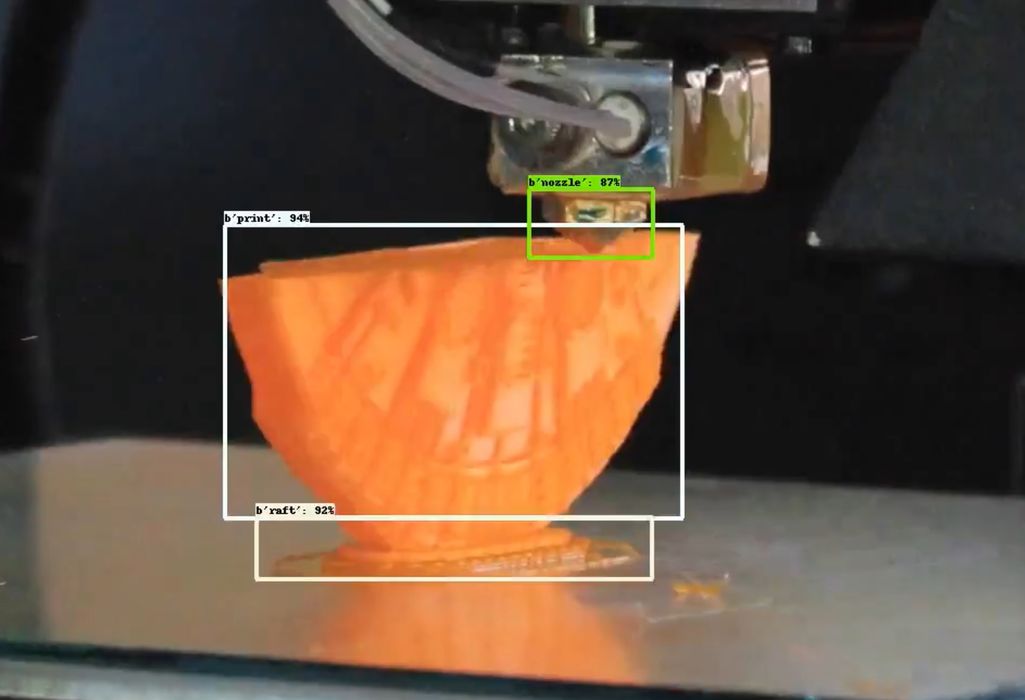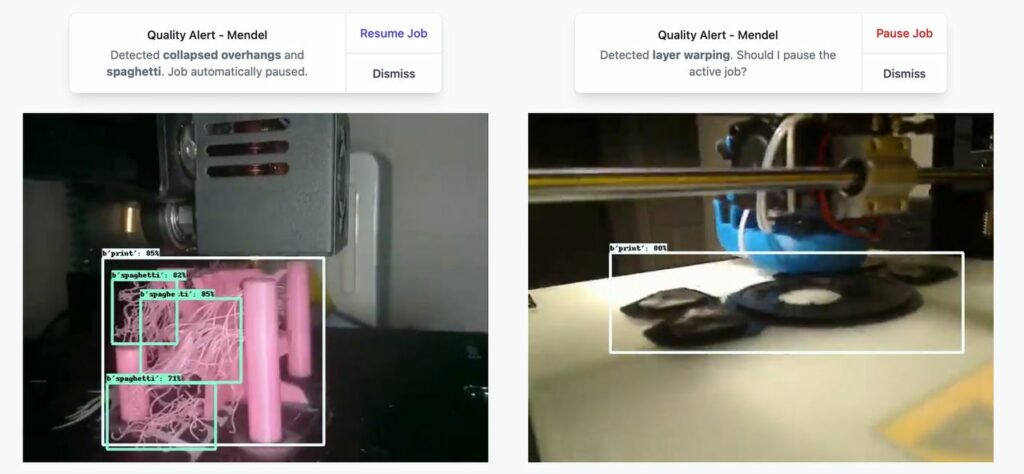
PrintNanny is a new AI system to smartly monitor 3D print jobs.
PrintNanny doesn’t yet seem to be a commercial project, but it is one that interested parties can join and participate.
The project was started by Leigh Johnson, Staff ML Engineer at Slack. Johnson sought a way to better monitor 3D print jobs, which as readers will certainly know, tend to fail rather frequently. There are many ways for a 3D print job to fail, and we’ve seen all of them. With a teeny budget of only US$2,000, Johnson was able to build PrintNanny.
A prototype was built in only two weeks, and with another few months the system included data transfers, telemetry and analysis, and included an advanced trained ML model. Apparently there are now over 200 testers in the closed beta test period, with well over 2,000 waiting to join.
PrintNanny is an open source project with code that runs on suitably-strong Raspberry Pi models. It’s a Linux-based system that uses Google’s TensorFlow machine learning system to implement a sophisticated computer vision system.
The vision system is able to examine repeated images of a print job in progress and make a decision whether the print job is “ok” or has failed. If so, it can then provide an alert to the operator for further attention.
This is a complicated matter, as there are many types of 3D print failure. According to Johnson, PrintNanny can detect failures including:
- Surface blistering
- Layer warping
- Temperature effects
- Geometric imperfections
- Catastrophic events
One of the key features of PrintNanny is that it is independent of the Internet: it works even when offline. This is quite important, since prints must proceed even if the line drops. This is quite different from some other detection systems that rely on cloud-based infrastructure to run. However, one issue is that alerts might not reach the operator if the network is down.

There are quite a few advanced features in the system, like queue management to automatically re-route failed jobs to alternate 3D printers, or the ability to share live video feeds with others. You can also access PrintNanny from anywhere via a VPN connection.
You might be wondering exactly how this system works, and how it all fits on a tiny Raspberry Pi. This is all due to the magic of machine learning and the advanced software components that can be used. For a detailed explanation of the system and how it works, watch this video where Johnson explains it in some detail. But be aware you likely have to have a basic understanding of machine learning concepts to keep up:
PrintNanny is an impressive platform, and one that very likely could be extended and improved to handle even more failure scenarios with additional machine learning training.
One thing that is unclear at the moment is where this project heads next. Will it become an open source tool that anyone can use forever, or could it become a commercial product? Even if open source, could it be adopted into a commercial product?
All of those possibilities seem open, but it remains to be seen where the project will end up. In the meantime PrintNanny could make many 3D printers’ life a lot easier.
Via PrintNanny and Toward Data Science
